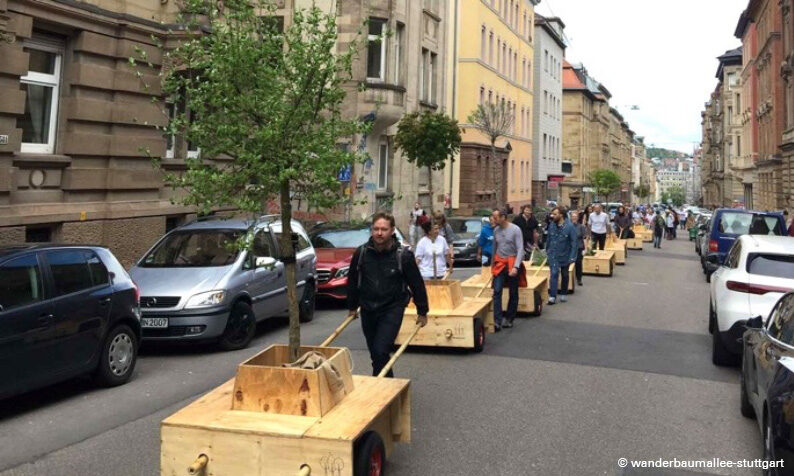
This Design Studio is offered in cooperation with ILPÖ
Integrated Research and Design Project II – Urban Trees as a Catalyst for Transformation
The integrated project will analyze Stuttgart Ost with a focus on the ecological and environmental challenges that the five inner-districts of Stuttgart are facing. These challenges will be paired with concerns for a socially inclusive urban development. The studio acknowledges that spaces in dense, inner-city district are scarce and in competition, but that healthy, active, blue-green public meeting points support a resilient urban development. This should be integrated into planning processes.
The studio will build upon the concept and practice of Nature-Based Solutions (NBS), Water Sensitive Urban Design (WSUD) and Tactical Urbanism and contextualize them into Stuttgart Ost. Tactical elements shall trigger the discussion on how to mitigate challenges such as heat waves or flooding risks. The ecological transformation should reflect concerns about density, cultural and social diversity and corresponding infrastructures. Key aspects that we will consider are Stuttgart Ost’s relationships with the current development plans (Stöckach EnBW Areal, Villa Berg Park, Redevelopment Area Gaisburg 32, etc.), with public and private green structures, with the Neckar river and other water bodies, with its industrial heritage, and with the social concerns that these topics generate.
In cooperation with the City of Stuttgart, with the grassroots project Wanderbaumallee Stuttgart, and under guidance of an interdisciplinary teaching team (Urban Ecology + Urban Planning) we will analyse and address existing blue-green infrastructures with regard to their ecological and social significance, and propose improvements. Based on participatory needs analyses, we will develop visions and concepts with the aim of securing and developing urban qualities and public accessibility in Stuttgart Ost in the long term.


